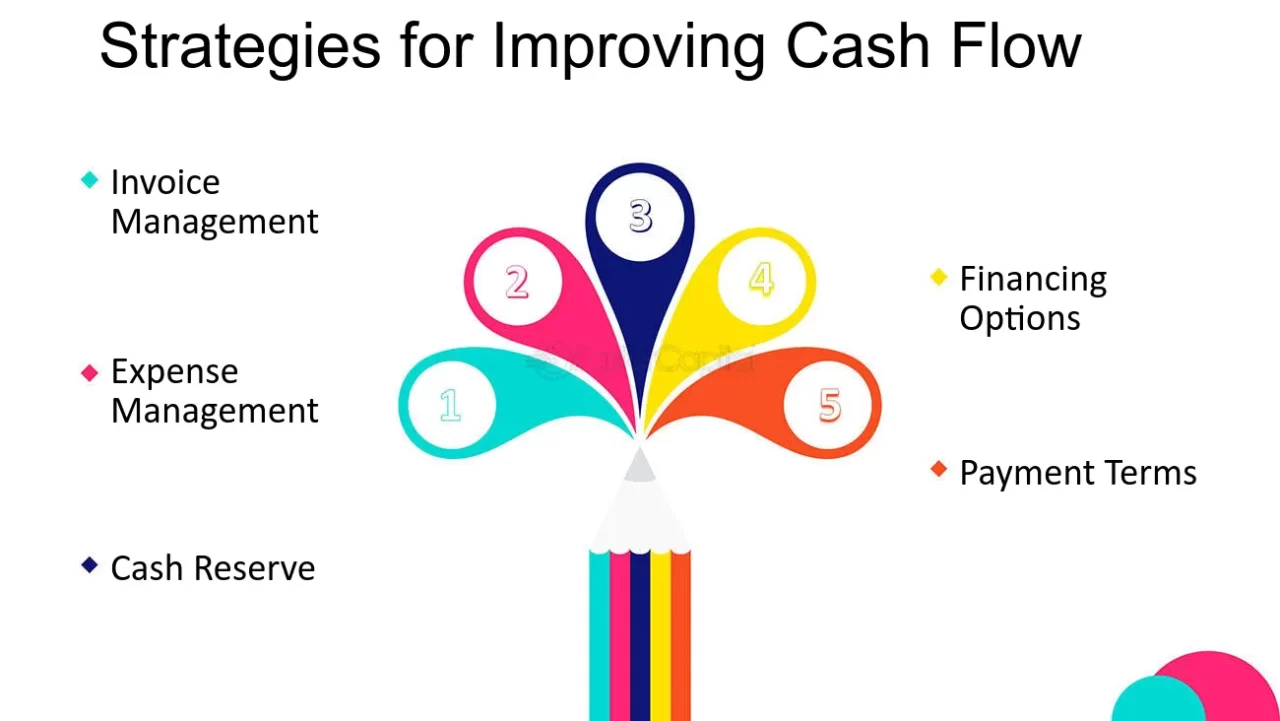In uncertain economic times, managing cash flow has become more crucial than ever. Cash flow is the lifeblood of any business, ensuring that it can meet its obligations and invest in growth opportunities. Without effective cash flow management, even profitable businesses can face financial difficulties.
At Pittroe, we will help you find the 10 best strategies for managing cash flow effectively during these unpredictable periods. We will explore practical steps and real-world examples to help you navigate financial challenges and maintain stability.
By understanding and implementing these strategies, you can ensure that your business remains resilient and ready to seize opportunities, even in the most uncertain times.
Let’s dive into these essential cash flow management techniques and learn how to keep your business financially healthy.

Creating an Accurate Cash Flow Forecast Unit:
Creating a cash flow forecast might sound complicated, but it’s pretty simple when broken down into steps:
- Gather Historical Data: Look at your past financial records to see patterns in your income and expenses.
- Estimate Future Sales: Predict how much money you expect to make based on market trends and your business’s performance.
- List Regular Expenses: Write down all your regular costs, such as rent, salaries, and utilities.
- Include Variable Costs: Consider expenses that change over time, like inventory or marketing costs.
- Create a Timeline: Set up a calendar to track when you expect to receive income and pay bills.
- Update Regularly: Check your forecast often and adjust it based on your financial performance.
2. Manage Your Finance Inventory:
Imagine you have a room full of toys you bought but have yet to sell. Those toys represent money that isn’t being used for anything else. In a business, inventory works the same way. Inventory is all the products a business has in stock but has yet to sell.
Furthermore, If you have too much inventory, your money is tied up in those products, and you can only use it for some essential things. This can hurt your cash flow management, the money coming in and going out of your business.
Is It Important To Look After Inventory Management?
3. Boost Receivables Management Systems:
Managing accounts receivable efficiently is crucial for maintaining a healthy cash flow. Accounts receivable represents the money customers owe a business.
Furthermore, If these payments are timely, it can create significant cash flow problems, making it easier to cover expenses and invest in growth opportunities.
Strategies – Quicker Collections & Reducing Bad Debts:
- Invoice Promptly: Send out invoices once a product is delivered or a service is provided. This sets the payment process in motion immediately.
- Clear Payment Terms: Communicate your payment terms at the outset. Make sure your customers understand when and how payments should be made.
- Early Payment Incentives: Offer discounts or incentives to customers who pay their invoices early. This can encourage quicker payments.
- Electronic Invoicing: Utilize electronic invoicing systems. They are faster and more efficient than traditional paper invoices, making it easy for customers to pay online.
- Follow Up on Overdue Invoices: Regularly track overdue invoices and follow up with customers promptly. Gentle reminders can help ensure payments are remembered.
- Collections Agency: If payments are overdue, consider employing a collections agency to recover the outstanding amounts.
4. Control Your Payables:

Think of payables as the money you owe to others, like your parents giving you pocket money to buy snacks, but you promise to pay them back later. According to a report, businesses that effectively manage their payables have a 20% better cash flow. This shows how important it is to balance payables and keep your business healthy.
In a business, payables are the bills and invoices that must be paid to suppliers, vendors, and other partners.
As our finance experts explain, Balancing payables is crucial because it helps manage cash flow. It ensures you have enough money to keep your business running smoothly without running out. It’s like ensuring you have enough allowance left until your next one.
Discovering Techniques for Extending Payment Terms:
- Build Good Relationships: Just like you trust your friends, build a good relationship with your suppliers. When they know you’re reliable, they might give you more time to pay.
- Negotiate Terms: Talk to your suppliers and see if you can extend your time paying your bills. You can get 45 days to pay instead of 30. Be polite and explain why you need more time.
- Make Partial Payments: If you can’t pay the total amount on time, ask if you can make partial payments. This shows that you’re trying to pay and keep the supplier happy.
- Use Automated Systems: Set up automatic reminders for when payments are due. This helps you stay on track and avoid late payments.
- Offer Something in Return: If you’re asking for more time to pay, offer something in return, like a promise to buy more in the future or pay a small fee for the delay. This can help your supplier feel better about giving you more time.
5. Get Financing Help:
According to a report by the Federal Reserve, nearly 70% of small businesses that applied for financing in 2019 received some form of funding, highlighting the accessibility and importance of these options for cash flow management and supporting growth.
Financing is crucial in managing cash flow, especially during uncertain times. Think of financing as a backup plan, like borrowing money from your parents when your allowance runs out.
For businesses, financing options such as loans, lines of credit, and investment capital provide the necessary funds to cover short-term gaps or invest in growth opportunities.
Moreover, This ensures that the business can continue to operate smoothly, pay its bills, and take advantage of new opportunities without being hampered by temporary cash shortages.
How To Find Appropriate Financing Options?
Identifying and securing suitable financing options requires careful planning and understanding of available resources. Here’s how businesses can approach this:
- Assess Financial Needs: Determine why you need financing. Is it for short-term cash flow Managment, long-term investment, or covering unexpected expenses?
- Explore Financing Options: Research different financing options, such as bank loans, lines of credit, venture capital, or crowdfunding. Each option has its own set of requirements and benefits.
- Prepare Financial Statements: Lenders and investors want detailed financial statements. Ensure your financial records are accurate and up-to-date.
- Develop a Solid Business Plan: A clear and convincing business plan can make it easier to secure financing. It should outline how the funds will be used and how they will benefit the business.
- Apply for Financing: Submit applications to the chosen financial institutions or investors. Be prepared to provide additional information and negotiate terms.
- Maintain Good Credit: A good credit score can significantly improve your chances of securing financing with favorable terms.
6. Measure Cut Costs:
Imagine your allowance is suddenly cut in half. You’d need to find ways to save money, right? In uncertain times, businesses face similar challenges. Controlling costs is super important because it helps save money, ensuring the business can survive and even thrive when things are tough.
Finding Out New Cost-Saving Measures:
- Track Expenses: Monitor where money is going, such as checking how much you spend on snacks.
- Cut Unnecessary Costs: Identify things you don’t need and stop spending on them. It’s like canceling a magazine subscription you never read.
- Negotiate Better Deals: Talk to suppliers and try to get discounts or better terms. Imagine asking for a giant scoop of ice cream for the same price.
7. Find New Ways to Earn:
Imagine having only one type of snack every day. If that snack runs out, you’d be in trouble. Similarly, businesses need multiple sources of income to stay safe. Relying on just one source is risky because the business can struggle if it fails. Having multiple revenue streams helps a business stay stable and strong.
Can you Earn From Different Sources?
- Explore New Markets: Sell your products or services in different regions or countries. This spreads the risk and opens new opportunities.
- Introduce New Products: Add new products or services to your lineup. Think of it as offering different snacks in different flavors.
- Partner with Others: Collaborate with other businesses to create new revenue opportunities. It’s like teaming up with friends for a lemonade stand.
- Subscription Services: Offer subscription plans for your products or services. This provides a steady income stream.
8. Use Tech & Automation:
Using technology in business is like having a superpower. It makes things faster, easier, and more accurate. Technology helps businesses track money better and automate processes for cash flow management, saving time and reducing mistakes.
Discover – Tools & Software for Automating Cash Flow
- Accounting Software: To manage finances, use tools like QuickBooks or Xero. These programs help track income and expenses and create reports.
- Invoicing Tools: Automated invoicing tools send out invoices and reminders, ensuring you get paid on time.
- Cash Flow Management Apps: Apps like Bill.com help manage and predict cash flow, clearly showing financial health.
- Payment Processors: Online payment systems make transactions faster and more secure.
9. Save Extra Money:
Having a cash reserve is like having a safety net. It’s extra money saved up for emergencies or unexpected expenses. A cash reserve provides security for businesses during tough times, ensuring they can continue operating without financial stress.
Want to Learn How to Build a Cash Reserve?
- Set Savings Goals: Decide how much money you need to save based on your business needs.
- Allocate a Percentage of Income: Regularly save a portion of your income. Even small amounts add up over time.
- Cut Unnecessary Costs: Identify and reduce unnecessary expenses to free up money for your reserve.
- Use a Separate Account: Keep your cash reserve separate to avoid spending it unintentionally.
10. Check Financial Reports Regularly:

Regularly reviewing financial statements is like checking your report card. It tells you how well you’re doing and what needs improvement. These reviews provide a clear picture of businesses’ financial health, helping them to make informed decisions and spot potential problems early.
Steps for Reviewing & Analyzing Financial Statements
- Set a Schedule: Review financial statements regularly, monthly, or quarterly.
- Compare Periods: Look at how your finances have changed over different periods to spot trends.
- Analyze Key Metrics: Focus on essential numbers like profit margins, expenses, and cash flow management.
- Seek Professional Help: If needed, get help from an accountant to understand complex details.
In Conclusion:
We covered 10 strategies for better cash flow management strategies, like forecasting, optimizing inventory, managing receivables, and securing financing. Proactively managing cash flow is crucial in uncertain times to ensure stability and growth for your business.
Start using these strategies today to improve your cash flow management and keep your business financially healthy and resilient. Moreover, you can contact us for further financial consultation at Pittroe Right away.
Blog Insights – Additional Resources
For deeper understanding and practical tips on managing cash flow, explore these resources:
- Forbes offers strategies for improving cash flow management in uncertain times.
- The Boss Magazine provides practical techniques for cash flow management.
- Bill.com shares tools and tips for automating cash flow processes and handling economic uncertainty.


